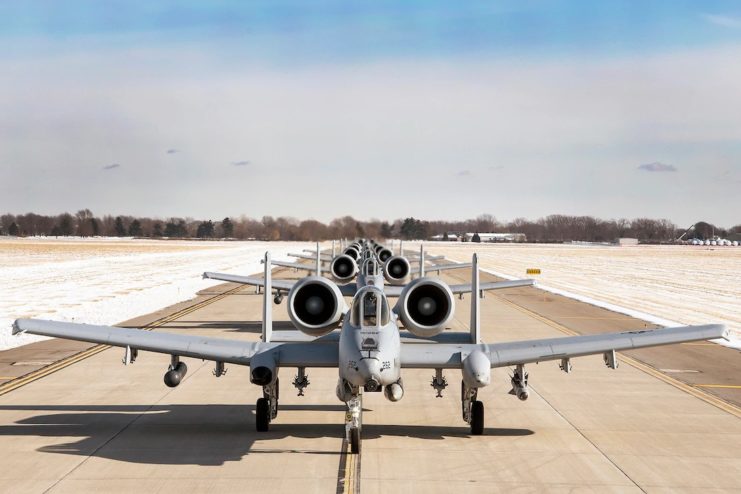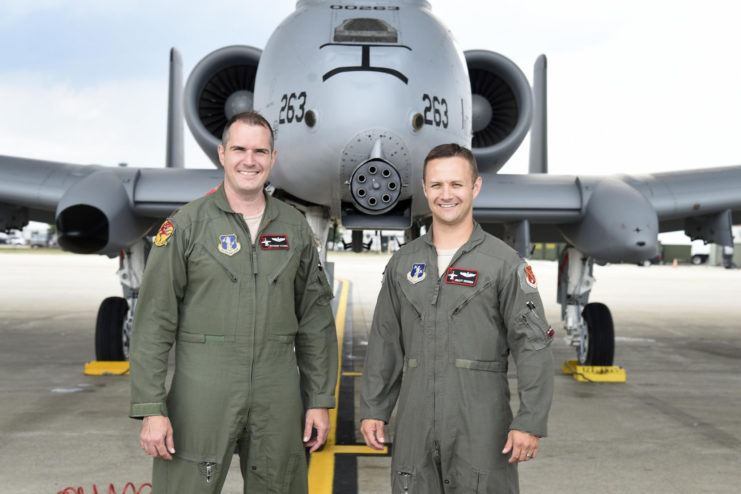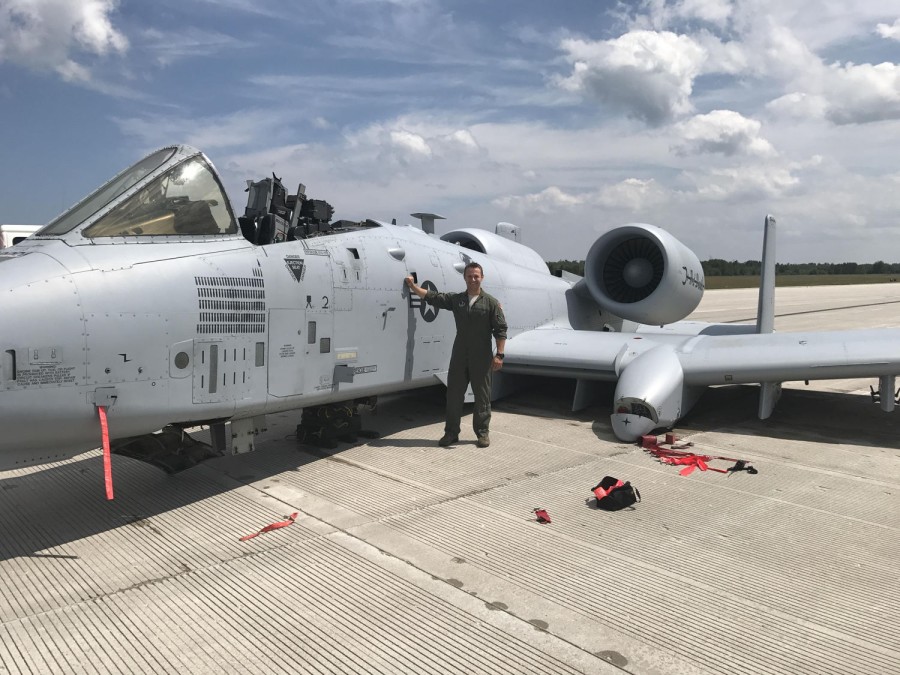A-10 Pilot Major Brett DeVries received the United States’ oldest decoration for military aviation, the Distinguished Flying Cross.
Air Force Secretary Barbra M. Barrett presented the medal to DeVries for successfully landing his A-10 Warthog after a gun malfunction blew off the canopy and damaged his landing gear on July 20, 2017.
The major was on a routine 30-minute training flight, one he says he’s made 300 times during his seven years with the Air National Guard. He made six bomb passes and one strafing run successfully. On his second strafing run, the gun malfunction caused the canopy to blow off. The resulting wind rushing at him threw him back in his seat and left him temporarily disoriented.

Fortunately his training kicked in and he automatically began climbing to a higher altitude, rising from 150 feet to about 2,000 feet.
His wingman noticed that something was wrong and flew under DeVries’ plane to inspect the damage. The wingman, Shannon Vicker (at the time, a major also), had served as an enlisted weapons specialist who worked on A-10s so the two conferred about the next steps.
After their discussion, it was decided that he would attempt to put the landing gear down. At that point they noticed that the main landing gear lowered, but the nose gear did not. As the Air Force noted in their 2017 report on the incident, landing with all the gear lowered is the preferred state. Landing with no gear down is less ideal. But landing with some gear raised and some lowered, “well, those stories seldom end well,” the report helpfully informs.
Fortunately, the gear retracted and DeVries was cleared to land at the Alpena Combat Readiness Training Center. With Vicker calling the altitude for him, DeVries made a textbook landing right on the center line of the runway. In all, DeVries flew for 25 minutes after the accident occurred.
After the aircraft came to a stop, DeVries quickly exited the plane in case there was an explosion.
Both pilots were credited with keeping a cool head in a difficult situation. Barrett called DeVries’ “skill, judgment and selflessness” on Twitter.

The landing was the first time in 40 years of the Warthog’s service that one had to land with no landing gear. In April of this year, another A-10 landed with its landing gear retracted at Moody Air Force Base in Georgia. The pilot was uninjured in that accident also.
DeVries has flown in nearly 120 overseas combat missions for the 107th Fighter Squadron of the 127th Wing.
Brig. Gen. Rolf E. Mammen, commander of the 127th Wing, said that DeVries’ level of airmanship was the standard that all in the 127th Wing should aspire to.
Another Article From Us: New Book Alleges Poisonous Pacific Legacy of the American Military
The A-10 is known for its maneuverability at low air speeds and altitude but is probably best known for the 30mm gatling gun mounted in the nose. It is known as the Warthog for its aggressive appearance and is often painted with a mouth full of sharp teeth on the nose.
